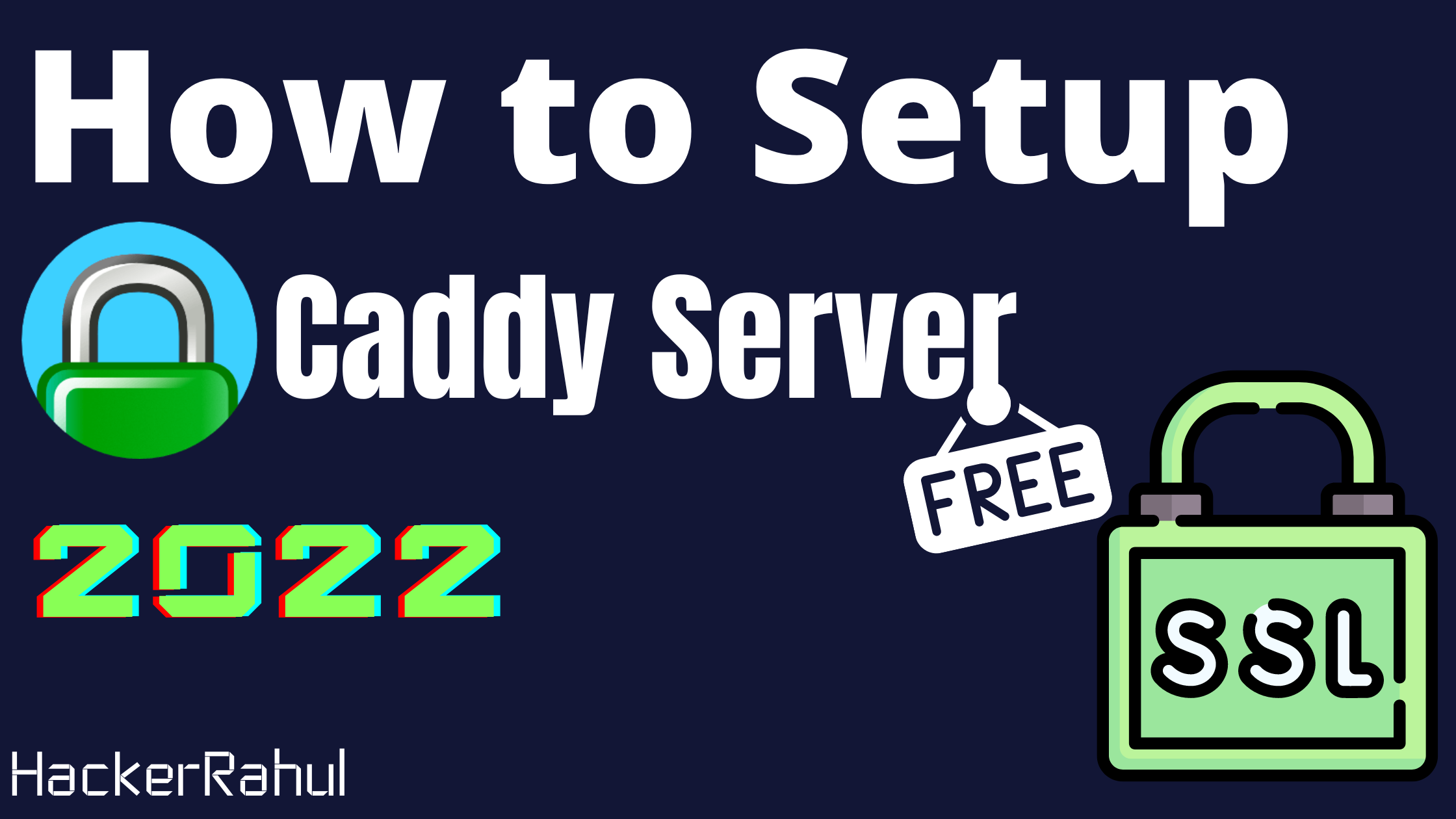Beginner guide to Caddy Server | 2022 | HackerRahul
 Rahul Gangotri
Rahul Gangotri
Hi, My First ever Blog after so long and many things have been changed since then like:
Platform Changed (From WordPress -> hashnode)☺️
I Got a Job as a Full Stack Developer
I am Working on my Startup, will announce that soon.
and Much more.
So here we go again, writing down my first ever blog on my not so first blog!
In this article, we are going to learn how to setup Caddy Server on a VPS, So Lets get started,
What Is Caddy Server?
Caddy is a web server that allows user to do things like reverse proxy, Serving static files, Serving PHP Sites, load balancing and much more.
Installing Caddy Server
For this tutorial we are going to take an example of a linux machine but you can download on any machine you have.
So To install caddy server, lets run these commands.
sudo apt install -y debian-keyring debian-archive-keyring apt-transport-https
curl -1sLf 'https://dl.cloudsmith.io/public/caddy/stable/gpg.key' | sudo gpg --dearmor -o /usr/share/keyrings/caddy-stable-archive-keyring.gpg
curl -1sLf 'https://dl.cloudsmith.io/public/caddy/stable/debian.deb.txt' | sudo tee /etc/apt/sources.list.d/caddy-stable.list
sudo apt update
sudo apt install caddy
You can also take a reference on how to install from the official Documentation
So now that we have our caddy server installed and running, we can confirm this by running the following command
sudo systemctl status caddy
If it shows active, then its successfully installed ! 🥳🥳
So now lets move to the next step.
Caddyfile Setup!
So Caddyfile is one of the way to setup applications in Caddy Server. So this is a pretty straight forward syntax unlike apache or nginx.
To Setup an application in Caddy file, Lets assume we have a Node JS (Express) app running on Port 3000
but instead of giving IP Address to your User, You prefer to give domain to easy access to the site.
So Now The Step to achieve the same are:
- Add these DNS Record in your Domain DNS setting, for ex. your VPs IP is x.x.x.x, you need to add an A Record
| Type | Host |
| A | x.x.x.x |
| AAAA | x.x.x.x |
One you added these records, you need to wait upto 24 hours for DNS to propogate globally.
- Now you have your domain pointed to the server and we have a Node Js app running on port 3000. Lets Reverse Proxy using Caddy!
The default path you can find your caddyfile is etc/caddy/Caddyfile
To Edit your Caddy file lets Nano into it
nano /etc/caddy/Caddyfile
or enter the path where your Caddyfile is.
Lets get our hands dirty now! 😛
To reverse proxy you xyz.com domain to your Node JS app running on port 3000
xyz.com {
reverse_proxy x.x.x.x:3000
}
After adding it make sure you reload your caddy service
sudo systemctl reload caddy
Thats Basically it! Sweet right? 😁
The fun Part is, now if you access your domain you have a node JS App running and
A Free SSL that renews automatically like a magic. ✨✨
Let me tell you one more thing, Hashnode itself uses caddy to serve its website and blogs. so whatever you are seeing right now is running using caddy server. cool right?
Now if your want to add more app and domains or do advance things like load balancing and all, you can edit the same Caddyfile and do it.
for Ex. if we add a new React app that is running on 3001 Port, our caddy file will look like
xyz.com {
reverse_proxy x.x.x.x:3000
}
reactapp.xyz {
reverse_proxy x.x.x.x:3001
}
and Restart, it will get a new SSL or this new domain and you can see the site up and running in just seconds.
So if you like the tutorial, make sure you subscribe and add a comment and like it.
ta-da! ✌️
Subscribe to my newsletter
Read articles from Rahul Gangotri directly inside your inbox. Subscribe to the newsletter, and don't miss out.
Written by
